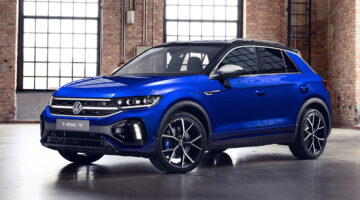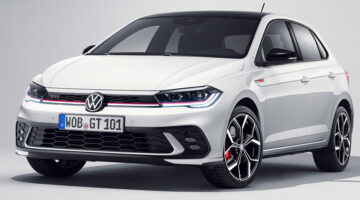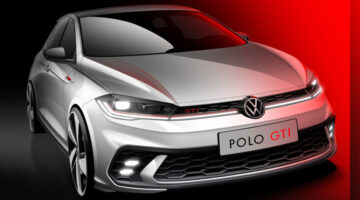The Volkswagen Karmann Ghia proved to the world when first launched in 1955 that the company could produce ‘sporty’ models.
[Not a valid template]When you throw Italian design, German manufacturing, American influence, and 1960/1970s panache together, chances are you’ll end up with the Volkswagen Karmann Ghia (or the Diesel fashion label). The Karmann Ghia remains one of the finer – and first – examples of ‘sporty Volkswagen’, bookmarking its place in the history books as a result. All the more ironic therefore that it shares the same platform, and indeed most of its ‘performance’ with the iconic Type 1 Beetle.
With the Volkswagen Beetle having already established itself as the company’s flagship saloon (the 10,000th unit was produced in 1946, less than a year after mass production began), a convertible model was commissioned in 1949, the production of which went to West German coachbuilders Karmann. Now hold on, because the next bit gets a little complicated.
Having recently made the jump from the Studebaker Corporation to Chrysler in 1949, American designer Virgil Exner contacted Italian entrepreneurs Carrozzeria Ghia to get his idea for ‘spicier’ Chryslers off the ground. Exner liked what he saw when the first design rolled his way in 1952 – the Chrysler K-310 Concept – and it wasn’t long before the American giant commissioned a 40-strong production. Production of the newly christened D’Elegance however hit a few snags, a lack of finances among the most crucial. The initial run of 40 was hacked down to 25, bigwigs at Ghia suitably irritated that they had been left with unused capacity and time to twiddle their thumbs.
Or so they thought. Having already considered the prospect of a ‘sexier’ Volkswagen Beetle convertible, Ghia designers – with the help of Karmann engineers – took ‘inspiration’ from Chrysler’s K-310 concept design to create a rolling coupe prototype on a Beetle platform, which would later be scrutinised by VW executives in November 1953. Having been convinced that the new model would not only prove popular in the niche automotive market but cost-effective to produce and maintain, VW CEO Heinrich Nordhoff finally gave the thumbs up for a limited production run after scriutineering the model in September 1953 Having adopted the names of its creators, the new Volkswagen Karmann Ghia made its European debut in 1955.
While many over the year’s have dubbed the Karmann Ghia the ‘People’s Porsche’ – a reference to the VW Beetle’s ‘Käfer’ moniker – don’t think VW’s latest convertible was a track weapon. The Beetle’s platform on which the Karmann sat had been widened by six inches to carry the new bodyshell, but the 1192cc air-cooled engine remained the same, as did its 36hp and questionable acceleration (this despite the coupe weighing just 794kg). Plant the right foot hard enough and you could just about hit 115kph, providing the 36-second 0-100kph time didn’t put you off.
What the Karmann Ghia did boast however was style, and lashings of it. As well as a low stance, the coupe boasted curved glass, frameless windows, rounded head and taillights, grooved bonnet and sleek front grille, or ‘whiskers’ as they’d later be known. Critical acclaim slid back and forth between reverence and revulsion, but VW’s new boy quickly made a name for itself. Whereas the Karmann Ghia enjoyed a 4500-strong production run during its eight year lifecycle, nearly three times that many Beetles would soon be hitting the factory floor every year. Hardly surprising then that in 1956, at just under $2400 the Karman Ghia was nearly $1000 more than the Beetle (around $21,500 and $8500 respectively in today’s money).



